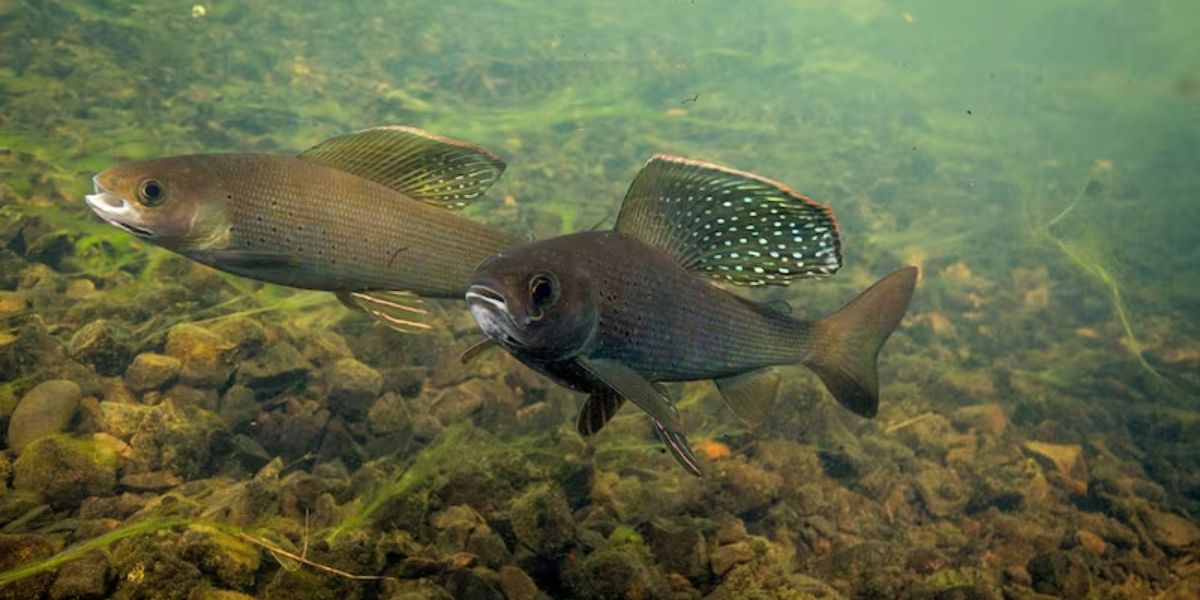The reintroduction of Arctic grayling to Michigan’s rivers is an ambitious endeavor that is a major step toward the restoration of a species that has been lost to the state for almost 90 years.
The Little River Band of Ottawa Indians and the Michigan Department of Natural Resources (DNR) are working together to lead the project.
Establishing self-sustaining Arctic grayling populations in Michigan rivers, where the species formerly flourished but vanished as a result of numerous environmental stresses, is the main goal of this reintroduction effort.
On May 12, the Grand Traverse Band of Ottawa and Chippewa Indians, the Little River Band of Ottawa Indians, and the Little Traverse Bay Bands of Odawa Indians will all receive 400,000 Arctic grayling eggs from the Michigan DNR, marking the formal start of the reintroduction effort.
In order to strategically place the eggs along the Manistee, Maple, and Boardman-Ottaway rivers—all of which are important waterways in the state—these Native American tribes will be essential.
In order to help the developing fish establish a natural relationship with the river systems and promote a more successful assimilation into the local environment, the eggs will be deposited in streamside incubators.
In the past, streams on Michigan’s Lower Peninsula, including well-known rivers like the Manistee and Au Sable, were home to Arctic grayling.
However, a number of problems, such as habitat loss, uncontrolled logging, and the introduction of non-native fish species that upset the biological balance, led to the extinction of the species in Michigan by 1936.
Since then, the state’s rivers have been devoid of Arctic grayling, and multiple attempts to bring them back have failed.
In order to restore Arctic grayling populations to Michigan’s rivers, a larger initiative was started in 2016 and includes the present reintroduction project.
A self-sustaining population was not the goal of earlier attempts to stock grayling in the state, such as the 2003 attempt to stock the fish in three lakes in Michigan. The current endeavor, on the other hand, is to establish long-term grayling populations that can flourish without ongoing human assistance.
According to the DNR, the likelihood of success this time will be significantly increased by developments in fish management techniques and technologies.
Even though earlier efforts have failed, the present initiative’s hope stems from the use of fresh methods and approaches that are more appropriate for developing a grayling population that can support itself.
Instead of depending on regular restocking, these techniques concentrate on establishing an environment where the fish can organically breed and flourish.
The project’s chances of success are further increased by the partnership with nearby Native American tribes, who have a long history of protecting Michigan’s natural resources.
An important element in Michigan’s continuous attempts to restore and safeguard its native species is the restoration of Arctic grayling.
Immigration Raid in Newark Stirs Controversy Among Local Authorities
If the project is successful, it may serve as a template for similar projects in other areas, supporting the larger conservation objectives of preserving ecosystem health and biodiversity.
Although the Arctic grayling’s future in Michigan remains unknown, there is hope that this once-extinct species can once again flourish in the state’s rivers with the help of contemporary technologies, community partnerships, and a dedication to ecological restoration.




